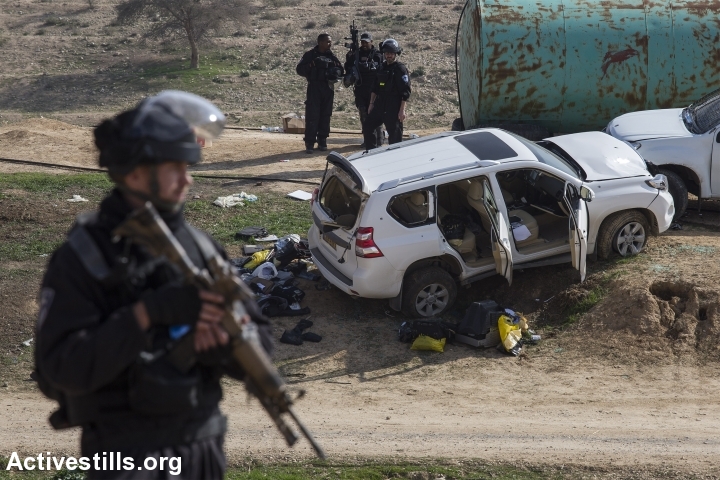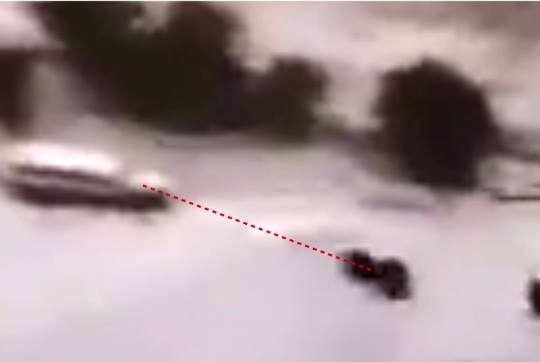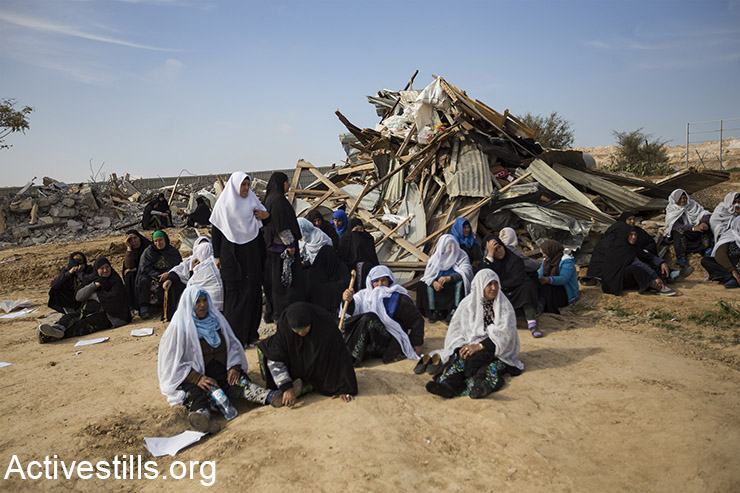The majority of Israeli journalists simply copied the official police version of the deadly events in Umm el-Hiran last week, effectively painting 20 percent of Israeli citizens as terrorists.

Kudos to the state: the Israeli media is now taking an active part in the government’s incitement.
Last week we were lucky enough to read news reports so ludicrous that they actually posed a danger to the average thinking mind. It was clear that aside from those who were present at Umm el-Hiran when Yaqub Abu Al-Qi’an was shot to death by police, no one actually knows what exactly happened. Thus, the majority of the public must rely on the media.
As a result, we ended up with two contrasting narratives about what exactly occurred. On the one hand we had citizens and activists who are connected to the Bedouin struggle in various ways, and who were watching the impending demolitions on Facebook Live. On the other are those who depend on news outlets whose journalists are not necessarily present at the scene itself, and thus rely on the police’s version of the events when writing their reports.
That is why we started off the morning with headlines such as “ISIS attack against security forces,” or “Vehicle attack by member of the Islamic Movement during evacuation of illegal structures in the Negev.” Yes, the media reached a new level of disconnect in its coverage of the events at Umm el-Hiran, with the majority of reporters siding with the official versions (even if they often contradicted one another).

By the afternoon, the police released edited aerial footage of the shooting — which did not support its initial version — thus undermining its own narrative. One cannot watch Abu Al-Qi’an’s car slowly driving along — before he is shot a number of times and suddenly speeds up — without calling into question the official version.
The same goes for the story of Joint List head Ayman Odeh, who was shot by a sponge-tipped bullet fired by the police. The media was quick to claim that Odeh was struck by stones thrown by locals, despite the fact that there were no stones being thrown at the time. Hours later, news outlets stitched together photos of Odeh lying near the police alongside shots of youth throwing stones, which took place hours after — at which point Odeh was already in the hospital.

Slowly, more distortions continued to roll out — part of a policy of “lie now, fix later,” which has worked for years and will likely work this time as well.
A dose of fear on the way to work
I am worried that beyond taking the police at its word — and adopting the policy of incitement against Arab citizens — important Israeli journalists are only emboldening that incitement.
Take, for instance, the popular Israeli news site Ynet. There, the editors decided to alter a report published by Hassan Shaalan. Despite the fact that the reporter insisted on interviewing members of Al-Qi’an’s family — whose home was destroyed and whose father was killed and then turned into a “terrorist” — the editors changed the wording to emphasize the terror link.
An even more extreme case took place on Israel Radio, where Assaf Pozailov lied and incited against tens of thousands of families living in southern Israel. “A general strike has been called in the Arab sector,” he said, “and there are dozens of Bedouin children who won’t be sent to school. They sit at home and hear the incitement from their family members and on television. They are idle.”

Had Pozailov bothered to check the facts, he would have discovered that the strike did not include schools, such that it was their teachers who spoke to them about home demolitions, the meaning of home, etc. But even if they did sit idly at home: how does Pozailov know what takes place in every Bedouin home? After all, the image of entire families that gather to imbue their helpless children with hate is meant only to provide the Jewish listener his or her dose of fear and demonization on their drive to work.
On that same program, Channel 1’s Itzik Zuaretz described how he was attacked by the residents of Umm el-Hiran while reporting. Let me be clear: there is no room for violence against journalists, and the attack on Zuaretz is something that our society must oppose. But we must also say this: Zuaretz came to Umm el-Hiran and stood, according to his words, right next to a yard of a demolished home — right next to the family mourning the death of Yaqub Abu Al-Qi’an. And all this while looking into the camera and calling the father a “terrorist” who “ran over” and killed police officer Erez Levy. Even this sensitive situation does not justify an attack on the reporter, yet journalists must also be cautious not to hurt families who have just lost their father and their home.
The host of the radio program added that MKs Ayman Odeh and Osama Saadi were wounded by stones thrown by Bedouin. Ayman was shot by security forces, while Saadi was hospitalized after being beaten by the police.
Between reports on inciting parents, Jewish victims, and Arabs who were harmed by other Arabs, the media portrayed Umm el-Hiran as a murderous village of Zombie Bedouin, who are so full of hate that they only want to hurt anyone who crosses their path. The chance that anyone who anyone who listened to the program and felt empathy for the villagers is likely nonexistent.
This was my Thursday morning: listening to journalists speak about the poor Jews who were harmed at Umm el-Hiran, stuck on Ayalon Highway between racist billboard signs warning of a coming Palestinian majority.
Perhaps the media can lie now and fix their mistakes later on. But what about the hatred and incitement? How can we fix them, and how long will it take to do so?
This article was first published in Hebrew on Local Call. Read it here.


